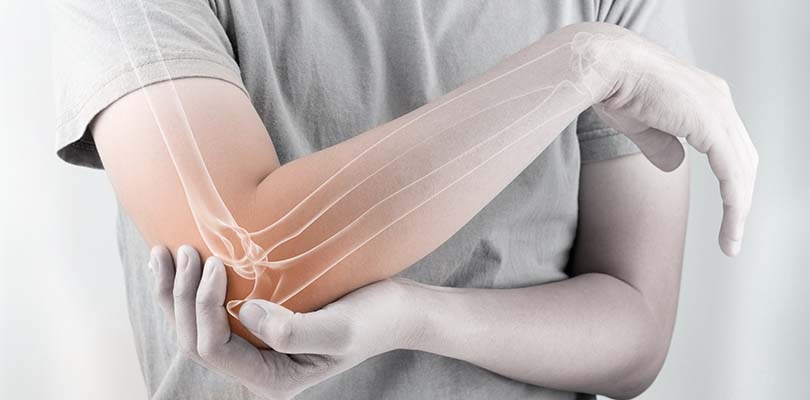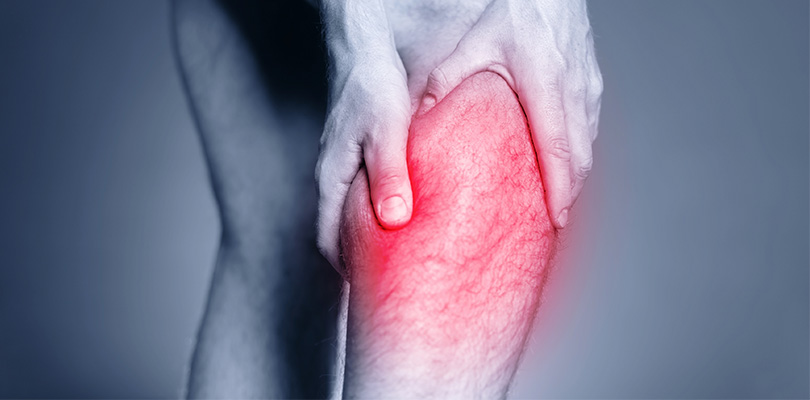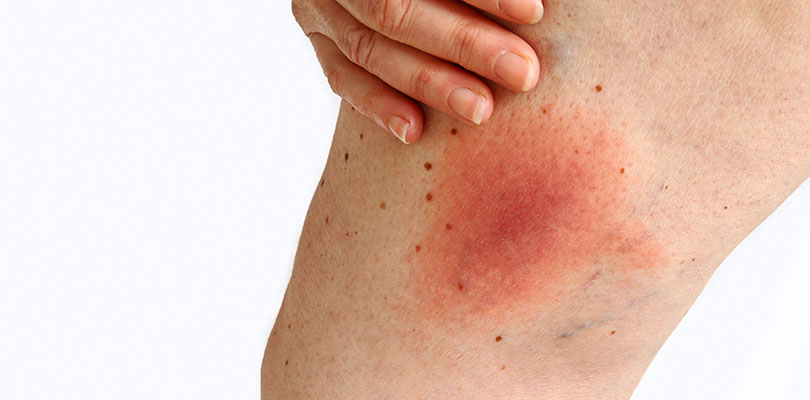Understanding Tendonitis Treatment
Tendons are thick cords connecting your bones to your muscles. When tendons become irritated or inflamed, it can lead to a condition called tendonitis. This health condition can cause intense pain and tenderness, making it difficult to move the affected joint. While any tendon in the body can develop it, it most commonly affects the tendons in the shoulders, knees, elbows, wrists and heels. Tendonitis treatment can vary due to location and severity.
Depending on the area affected, the condition may be referred to as:
- Swimmer’s or pitcher’s shoulder
- Jumpers knee
- Golfer’s or tennis elbow
Cause of Tendonitis
While an abrupt injury may result in tendonitis, the most common cause is repetitive strain. With that being said, if you frequently make the same motion while performing a task (i.e. sports or working), you may develop it too. Athletes who play tennis, golf, basketball, baseball and bowling are at an increased risk of tendonitis due to the physical exertion associated with repetitive movements. It’s important to keep in mind that performing a certain motion incorrectly can increase your risk of developing this condition because improper technique causes overload on the tendon.
Risk factors have been identified that increase your risk of tendonitis:
- Age
- Certain diseases (i.e. rheumatoid arthritis and diabetes)
- Antibiotics (i.e. Levaquin)
- Certain occupations (jobs that involve repetitive movement, vibration, exertion, awkward positions and frequent reaching overhead)
Signs and Symptoms of Tendonitis
Signs and symptoms appear to arise in the area where the affected tendon is connected to the bone. Pain can often be described as a dull ache that is localized to the affected joint and increases when the joint is moved. Joint tenderness and joint swelling can also occur.
How Is It Diagnosed?
Your doctor can often diagnose it by taking a detailed history of your symptoms and performing a physical exam of the area. However, in some cases, imaging may be recommended to rule out other conditions.
Treatment of Tendonitis
Treatment for tendonitis is focused on relieving pain and inflammation and improving function of the affected joint. In many cases, it can be treated successfully at home.
Rest
Don't do activities that exacerbate the swelling or pain. While rest is an essential step for treating tendonitis, prolonged inactivity can cause stiffness of the joint. After several days of resting the injured area completely, slowly begin moving your joint through a motion of complete range to help maintain a flexible joint.
Rest is crucial to help tissues heal, but this does not mean that you should rest completely. You can look for other exercises that do not emphasize stress on your affected tendon.
Ice
Applying ice to the affected area for 10 to 15 minutes at a time can help to reduce pain and swelling.
Pressure
Because swelling can make an injured joint lose its motion, the area should be compressed until the swelling subsides. Compressive bandages and wraps work perfectly.
Elevation
Try to elevate the affected area to decrease swelling.
Medical Treatment for Tendonitis
Pain-Relief Medicine
You can also try over-the-counter medications to help decrease pain and inflammation, such as acetaminophen (Tylenol), ibuprofen (Advil), aspirin (Zorprin), or naproxen sodium (Aleve).
Spinal stenosis (or narrowing) is a condition that affects older adults, causing pain, numbness and other problems within bones of your spine.
Physical Therapy
If you cannot control your tendonitis symptoms at home, you may benefit from physical therapy. A physical therapist can design a program consisting of specific exercises that are aimed to stretch and strengthen the affected area.
Platelet-Rich Injections
When an injured tendon does not heal with home treatment and physical therapy, your doctors may recommend a platelet-rich plasma (PRP) injection, which is also called autologous conditioned plasma (ACP). Experts believe that the natural healing features found in platelets and plasma promote healing and repair damaged tendons by encouraging the production of collagen, which is an important constituent of the tissue found in tendons. It’s also believed that certain proteins within PRP change receptors and decrease precipitation of pain.
Corticosteroids
As for other treatment options for tendonitis, corticosteroids can be injected around the tendon to help decrease pain and inflammation. If you have this condition for over three to four months, it is considered chronic and, in this case, corticosteroids are not recommended because repeated injections can make your tendon weaker and increase your risk of tendon rupture.
Dry Needling
Dry needling can also be performed to relieve symptoms. Dry needling involves making little holes in the tendon with a fine needle, which raises the levels of certain factors involved in tendon healing.
Ultrasound and Water Therapy
Ultrasound and water therapy may be useful to help relax muscles and tendons to improve circulation and promote healing.
In cases of chronic tendonitis or tendon rupture, surgery may be necessary.
How Can It Be Prevented?
You can help prevent tendonitis by following a few simple tips:
- Change up your exercise routine frequently.
- Stretch before and after exercising.
- Warm up prior to vigorous activity.
- Gradually increase your exercise intensity.
- Reduce repetitive use of a joint.
- Wear appropriate equipment.
- Have an ergonomically correct workstation.
- Ensure you are using proper techniques.
In Conclusion
Tendonitis can cause pain and swelling in the affected area, making everyday tasks difficult to perform. However, the good news is that most cases heal with conservative care, including rest, ice, compression and elevation, that can often be performed at home.
If you are suffering from persistent symptoms despite home therapy, you may want to consider consulting a physical therapist to develop a program that can help you decrease your pain and improve function of the affected joint.







